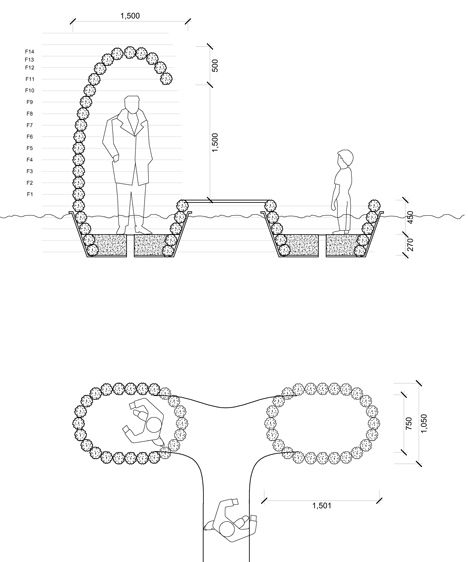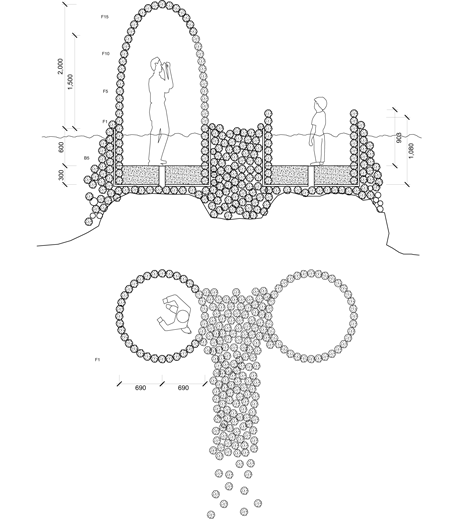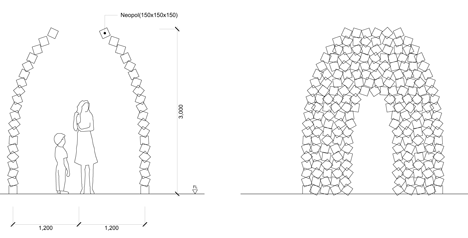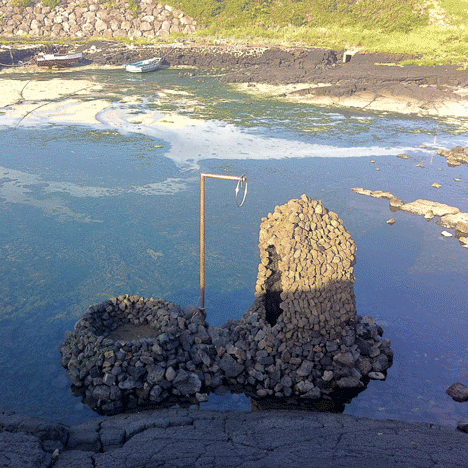
Volcanic stone structures pump fresh water from the sea surrounding a South Korean island
A team of architects, artists and scientists has built a pair of basalt structures on the shoreline of a South Korean island to help to draw up fresh water from a spring below the sea.
The team, which included South Korean studios Wise Architecture and Nameless Architecture, created the structures as part of an investigation into fresh water springs on Jeju, an island that sits off the southern coast of South Korea.
The springs form a valuable source of fresh water for islanders and are often surrounded with stone walls to protect them against contamination from the sea. But their number has diminished in recent years, making fresh water sources fewer and farther between.

The design team constructed the pair of dome and pool-shaped structures named Tang (water basin) around one such spring that emerges near the sea shore in the village of Gimnyeong.
"Rivers are scarce in Jeju Island and thus very special to people because they had provided drinking water," explained the team. "There are some spots on shores where river water spouts out like spring water; such spots and the water are called yongcheonsu. Villages in Jeju Island were naturally formed around these yongcheonsus."
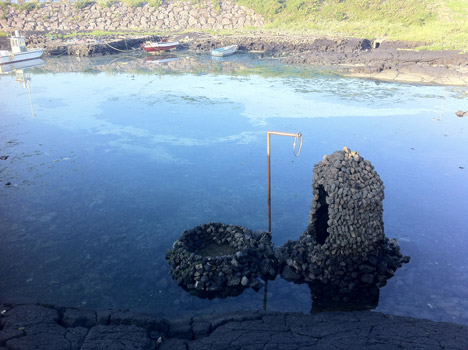
The structures help to draw drinking water from the spring to the surface of the sea. Fresh water and salt water located in a chamber below the ground are separated by a semi-permeable membrane. The pressure caused by the movement of fresh water through the membrane produces enough energy to pump it out of the ground.
The irregularly shaped basalt rocks that form the walls are held together by lengths of stainless steel wire like a necklace to prevent the structures from disintegrating. The same volcanic rock from the island has also been used to cover the roofs of villas by Kengo Kuma and to form a collection of desktop accessories.
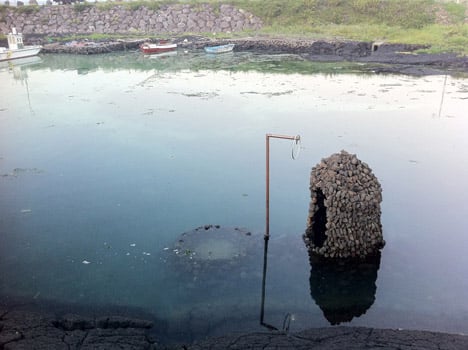
Stone walls are used across the island to mark property boundaries, religious shrines and to form the walls of buildings – including a glass and stone residence designed by Japanese architect Tadao Ando, which the team cites as a reference.
The design team created Tang as a temporary installation for the Jejuannuale Nature and Media Annuale in 2013 but the structure remains in place.
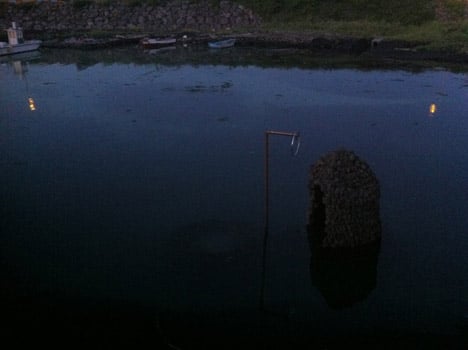
Wise Architecture and Nameless Architects both have offices in Seoul. Past projects by Wise include a bamboo shrine for the victims of a ferry disaster, while other works by Nameless include a cross-shaped church and a school with a triangular courtyard.
Although relatively small, Jeju Island is also home to
Project credits:
Architects: Wise Architecture, Nameless Architecture, Taeseok Ha, Suin Yang
Artists: Byeongjun Kwon, Saehee Min, Jinu Park, Everyware (Yoonsil Heo, Hyeonwoo Bang)
Scientists: Seongjo Kwak, Daehee Kim, Hoyoung Kim, Hyeonkyeong Yang
